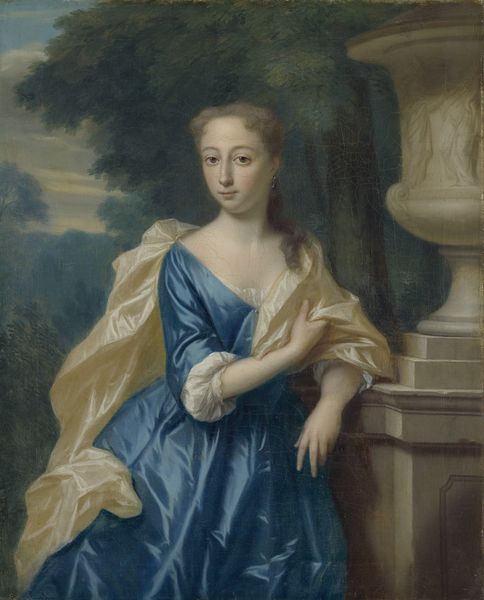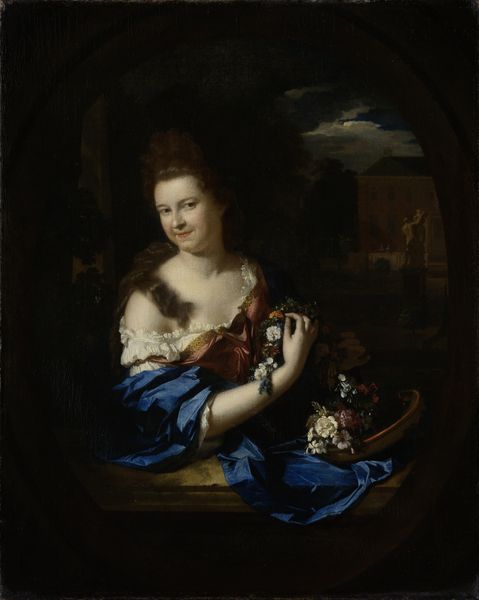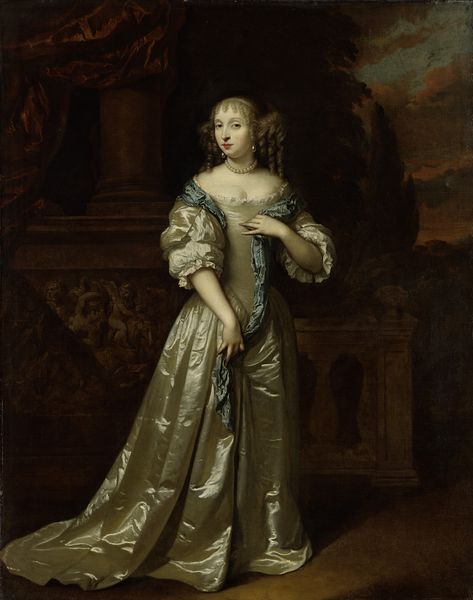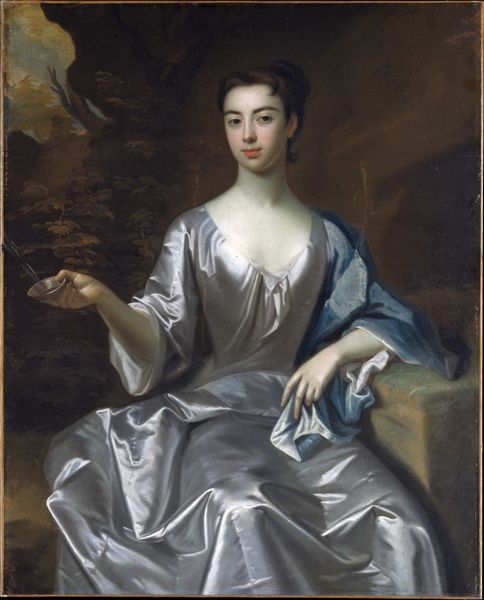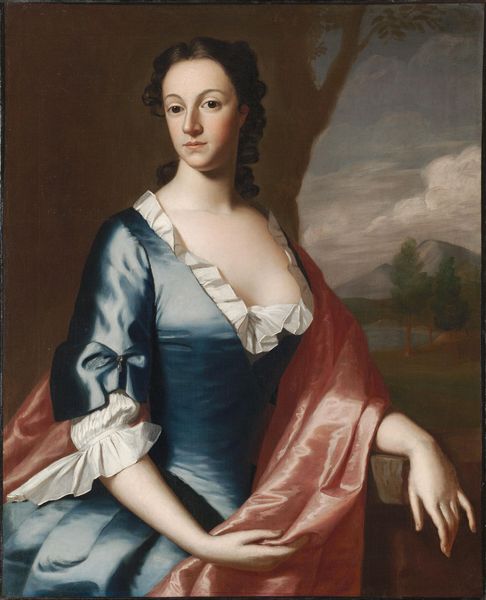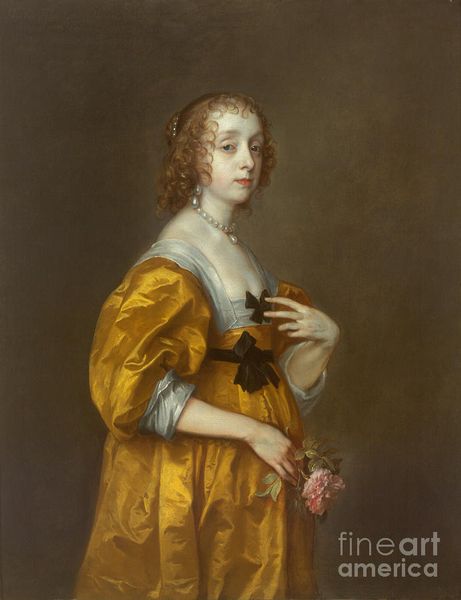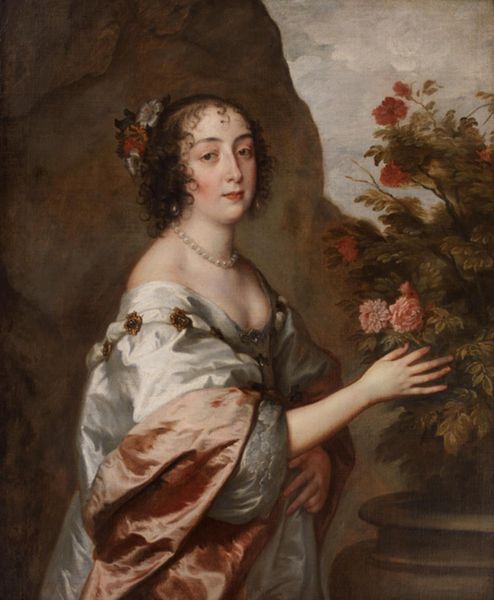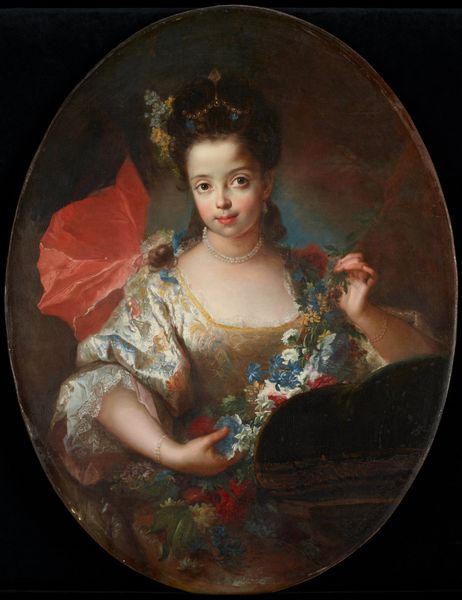
painting
#
portrait
#
baroque
#
painting
#
genre-painting
Dimensions: 49 3/4 x 40 1/4 in. (126.4 x 102.2 cm)
Copyright: Public Domain
Willem Wissing, a Dutch artist working in England, painted this portrait of an unknown woman in oil on canvas sometime in the late 17th century. The image presents a woman of the English aristocracy, but it also presents the institution of portraiture. The woman is dressed in an elaborate gown of blue and white satin, set off by a red mantle. She is posed in a landscape, a convention of aristocratic portraiture since the Renaissance. Wissing was court painter to James II, and he understood the politics of imagery. The woman is portrayed as beautiful, poised, and wealthy. The English aristocracy was obsessed with social standing, and portraits were a way to display one's status. However, the woman's gaze is averted, and her expression is melancholy. It seems Wissing is not only glorifying the sitter, but also commenting on the social constraints placed upon women of her class. Art historians rely on a range of period documents to understand these images, including letters, diaries, and fashion plates. Each element of the image helps to contextualize the sitter's social status, as well as the artist's commentary on the institutions of art and society.
Comments
No comments
Be the first to comment and join the conversation on the ultimate creative platform.

